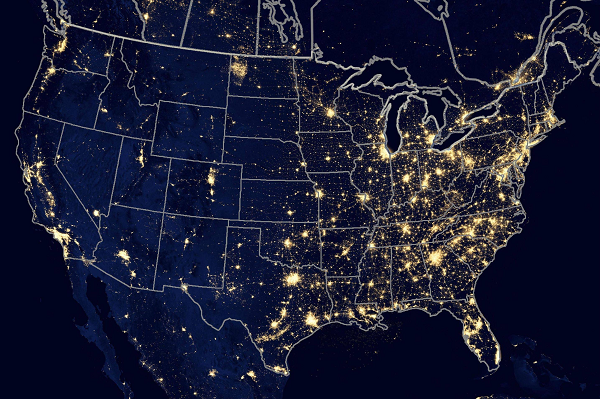
"It's really hard to wrap your mind around that volume," Elske Tielens, an insect ecologist and the lead researchers of the study, told the New York Times. "We're getting more grasshoppers in the air on a single day than you get humans coming to Vegas to gamble across an entire year."
The study was published on March 31 in the journal Biology Letters.
Light pollution affects grasshoppers' behavior
In July 2019, swarms of pallid-winged grasshoppers from southern Nevada descended on Vegas every night. Their numbers grew each day, peaking on July 26 to such a size that locals named it "the great grasshopper invasion of 2019."
Experts attributed the invasion in part to Vegas' brilliant display of lights. Luxor Hotel and Casino, a 30-story pyramid on the Las Vegas Strip that was inspired by the ancient Egyptian structures, was among the "magnets" that drew grasshoppers to the city. Staff members said that airline pilots from as far away as Los Angeles could see the "Sky Beam," a powerful column of light issuing nightly from the pyramid's peak.
Tielens and her team thought the grasshopper invasion could show artificial light's impact on insects at a regional level, which had not been explored at such a scale before. To that end, the researchers collected data from weather stations around Las Vegas and from the National Oceanic and Atmospheric Administration.
Radar images showed roving "clouds" of grasshoppers that moving all over Vegas, resembling what commonly appeared on radar screens during a thunderstorm. The grasshoppers seemed to have been following a daily routine dictated by the day-night cycle: They would spread out over a wide area of vegetation during the day and take to the sky by dusk, venturing in droves toward the city's brightest spots. (Related: Light pollution found to disrupt natural balance between insects and predators, impacting ecosystem health.)
The researchers then examined the clouds' size and density, along with the grasshoppers' size and weight, to calculate the number of insects that flew on the peak night. Their calculations showed that more than 45 million grasshoppers flocked the city on July 26, which they estimated could weigh around 30 tons.
Based on these findings, the researchers concluded that light pollution could influence the behavior of regional insect populations. Brett Seymoure, an ecologist at Washington University in St. Louis, who was not part of the study, called the findings "exciting."
"We really don't have evidence until right now, with this paper, that the light dome is guiding insects," Seymoure said.
Behavioral changes from light pollution could lead to extinction of several insect species
Ecologists are concerned that various insect species are headed toward extinction. The concern comes from the fact that many insect populations are rapidly dwindling, driven by human stressors such as light pollution, pesticide use and urbanization.
David Wagner, an insect scientist from the University of Connecticut, estimates that insect populations are declining by one to two percent every year. "You're losing 10 to 20 percent of your animals over a single decade and that is just absolutely frightening. You're tearing apart the tapestry of life," Wagner told the Guardian in January.
Grasshoppers are among those whose numbers are shrinking. A study published last year shows that grasshopper populations in a Kansas grassland preserve went down by more than 30 percent over the last two decades. The finding is quite unexpected because the reserve is thought to be a stable habitat for grasshoppers.
Wagner and other scientists warn that without urgent action, several insects may eventually go extinct, which can have dire implications for ecosystems and other animals along the food chain.
Learn more about how light pollution and other human stressors are driving insects to extinction at Ecology.news.
Sources include:
Please contact us for more information.























